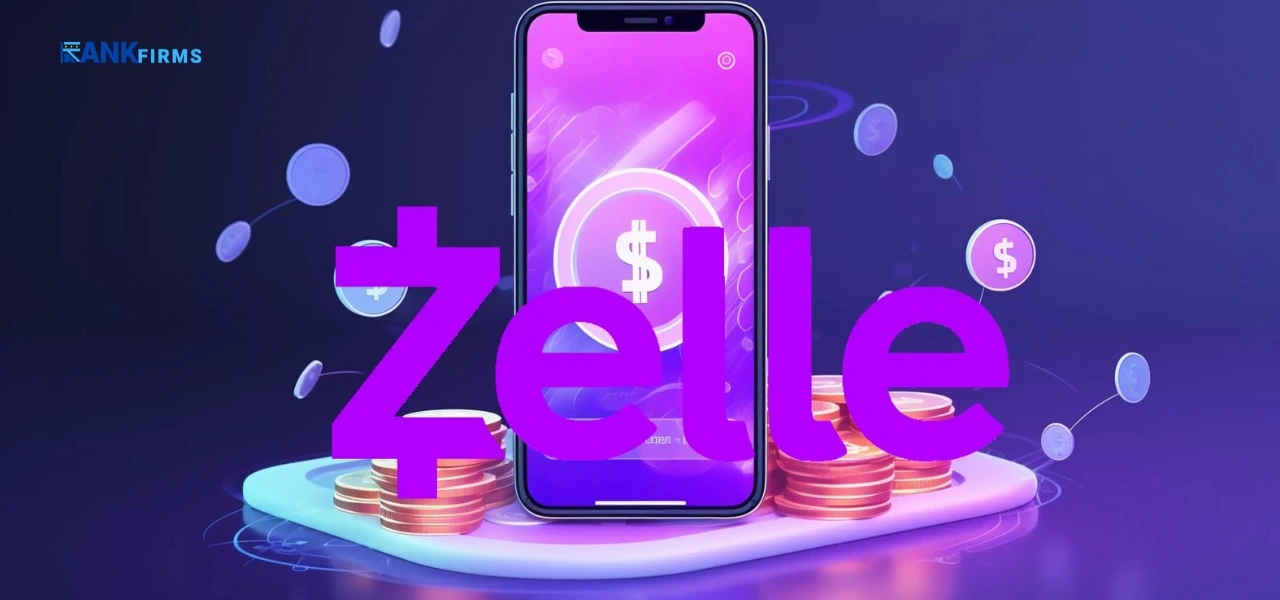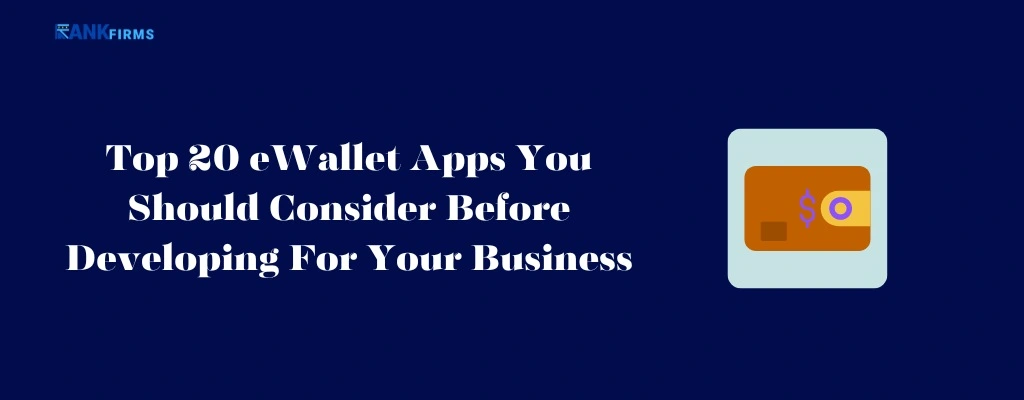The rise of smartphones and mobile internet introduced new business ideas to us. It even revolutionised the ways to handle money. Yes, we are talking about the convenient and contactless solution, E-Wallets.
Introduced during the digital boom, e-wallets aimed to replace cash and cards. Their purpose was simple: make payments easier and faster for users. Additionally, they also reduced the reliability of physical cards, ATM waits, and cash handling.
Certainly, their popularity is rising and expanding swiftly. The stats say that, by 2028, the mobile wallet market is projected to reach $51 billion.
Moreover, by 2026, the global mobile payment market is expected to exceed $12 trillion, driven by increasing demand for seamless and secure payment solutions.
In 2021, over 2.8 billion mobile wallets were used globally. Asia-Pacific leads the market, accounting for over 40% of transactions. The CAGR of the mobile wallet market is expected to hit 24% from 2022 to 2028. Over 70% of consumers prefer digital wallets over cash and cards.
For businesses, e-wallets opened new possibilities in payment systems. Entrepreneurs saw a growing market and opportunity to innovate. Today, e-wallet apps are a critical part of the digital economy. IT services companies are essential for developing secure, scalable wallet applications.
Top 20 eWallet Applications That Are At Boom

As digital transactions continue to grow, these apps have become essential tools for individuals and businesses. They offer features such as peer-to-peer transfers, contactless payments, and integration with various financial services. Here’s a closer look at the top 20 e-wallet apps in the USA, highlighting their unique features and benefits.
1. PayPal
PayPal is one of the most widely recognised e-wallets globally. It supports secure peer-to-peer payments, online purchases, and multiple currencies. Users can link bank accounts, credit cards, or debit cards for easy fund transfers. PayPal is known for its robust fraud protection and buyer security, making it a preferred choice for e-commerce. Its user interface is simple, with easy-to-navigate options for sending money or paying for goods.
2. Apple Pay
Apple Pay allows contactless payments via iPhones, iPads, and Apple Watches. Users can securely store multiple cards and make payments with a simple tap. It integrates with Apple’s ecosystem, offering seamless functionality across apps and stores. Apple Pay uses advanced security measures, like Face ID, Touch ID, and device-specific numbers, to keep transactions safe. The app also supports online payments, making it a versatile tool.
3. Google Pay
Google Pay combines both online and in-store payment options. It uses NFC technology for contactless payments and supports online transactions through Google-linked accounts. The app allows users to store loyalty cards, gift cards, and transit passes, making it a comprehensive digital wallet. With its easy-to-use interface users can quickly send money, split bills, or track purchases. Google Pay’s seamless integration across Android devices adds convenience for users.
4. Samsung Pay
Samsung Pay stands out by supporting – NFC and MST (Magnetic Secure Transmission) technology. This makes it compatible with a broader range of payment terminals, even older ones. It also allows users to store gift cards and loyalty programs, consolidating all payment needs into one app. Samsung Pay’s secure payment feature, Knox, ensures high-level encrypted transactions. The app’s clean, user-friendly interface is easy to navigate and processes payments quickly.
5. Venmo
Venmo is a popular peer-to-peer payment app known for its social feature, where users can share payment notes. It’s preferred for splitting bills, rent, and shared expenses. Venmo links directly to bank accounts or credit cards, offering quick transfers between users. The app also provides an option to pay businesses and make online purchases. Venmo’s fun, interactive interface includes emojis and a social feed, making it more engaging than typical payment apps.
6. Cash App
Cash App provides peer-to-peer transfers with advanced features like Bitcoin trading and stock investments. The app is simple, allowing users to send and receive money quickly. It links to debit cards or bank accounts and offers a free custom Visa debit card for spending. Cash App also let users buy and sell Bitcoin directly from the platform. Its minimalist design makes navigation easy for those who prefer a straightforward financial app.
7. Stripe
Stripe is a customisable payment platform built for businesses. The developer-friendly integrated system supports various payment methods, including cards and digital wallets. Stripe offers robust tools for managing recurring payments, invoicing, and international transactions. The app’s interface is designed for easy business management, with components like real-time reporting and analytics. It’s a top choice for Software development companies looking to integrate payments into custom apps.
8. Zelle
Zelle is integrated directly with most U.S. banks, enabling fast bank-to-bank transfers. Unlike other apps, Zelle doesn’t require holding funds in the app, as money is transferred instantly between accounts. It’s highly secure and eliminates the need for waiting times seen in other peer-to-peer platforms. The user interface is simple and focused on ease of use, with minimal steps for sending or receiving money. Its direct bank integration makes it perfect for fast, secure payments.

9. Amazon Pay
Amazon Pay allows users to make payments using their Amazon account across various websites. It’s especially convenient for frequent Amazon shoppers, as it reduces the need to enter payment details repeatedly. The app ensures secure transactions with advanced encryption and fraud protection. Amazon Pay integrates seamlessly with merchants, making online checkout fast and smooth. Its interface is straightforward, making payments easier for users who trust Amazon.
10. Walmart Pay
Walmart Pay enables customers to make payments at Walmart stores by scanning a QR code. The app is integrated into the Walmart mobile app, allowing users to pay, store receipts, and view purchase history. It links directly to the user’s debit or credit card, ensuring a smooth and secure payment process. The interface is designed to streamline the in-store experience, making checkouts faster and easier, especially for frequent Walmart shoppers.
11. Chase Pay
Chase Pay connects directly to Chase bank accounts, providing a seamless payment experience for Chase customers. It supports – online and in-store payments, with a simple and secure interface. Chase Pay also offers cashback rewards and discounts with partnered merchants, adding value for users. The app’s integration with Chase accounts means users don’t have to link external payment methods, making it quick and convenient for existing Chase customers.
12. Visa Checkout
Visa Checkout allows users to pay online with a saved Visa card without re-entering payment information. It simplifies online shopping by providing a faster checkout process across websites. The app ensures high-level security with Visa’s fraud protection services, giving users confidence in their transactions. Visa Checkout is designed for ease of use, making it a popular choice for frequent online shoppers who prefer a quick payment solution.
13. Masterpass
Masterpass, offered by Mastercard, enables quick and secure online payments. It stores users’ card information, allowing for fast checkouts across participating merchants. The app’s interface is straightforward focusing on simplicity and speed. Masterpass also includes encryption and fraud detection to protect user data. For businesses and customers looking for a streamlined digital wallet, Masterpass provides an efficient payment solution.
14. Facebook Pay
Facebook Pay supports payments across Facebook, Instagram, Messenger, and WhatsApp, for easy money transfers while chatting or shopping. Users can link their credit or debit cards for fast transfers. The app is integrated into social platforms, so the interface feels familiar and simple to navigate. Facebook Pay also allows donations, in-app purchases, and purchases from participating merchants, offering multiple uses within the social media ecosystem.
Also Read: Performance, Cost, and Time: Deciding Between Android vs IOS vs Hybrid App Development
15. Square
Square is built for small businesses and offers mobile card readers alongside digital wallet features. It supports payments, invoicing, and inventory management, all within one app. Square’s clean interface is designed to make business operations easier, allowing business owners to track sales, manage customers, and process payments. The app is widely used in physical stores and by small service providers for its simple setup and ease of use.
16. Alipay
Alipay is a comprehensive digital wallet that supports payments, savings, investments, and bill payments. It’s widely used in China but is also expanding globally. Alipay offers QR code-based payments, making it suitable for in-store and online shopping payments. The app’s interface is simple and efficient, with strong security measures like encryption and biometric verification.
17. WePay
WePay provides integrated payment solutions for online platforms and marketplaces. It’s designed for developers and businesses, offering customisable APIs to support payments within apps or websites. The app is simple for end-users, providing a seamless and uninterrupted payment process. Its features include real-time payment tracking and fraud protection, making it ideal for businesses that require secure, scalable solutions.
18. Dwolla
Dwolla specialises in bank transfers and ACH payments, offering businesses a flexible payment solution. The app is designed for developers allowing them to integrate payments directly into their platforms. Dwolla has an easy-to-use API and secure infrastructure for handling large-scale transactions. Dwolla’s interface for end-users is clean and focused on fast, reliable transfers, making it a popular choice among mobile app development companies & entrepreneurs.
19. Braintree
Braintree, owned by PayPal, supports a variety of payment methods, including credit cards, PayPal, and digital wallets. It’s known for its developer-friendly API, which allows businesses to customise their payment solutions. Braintree’s user interface is straightforward, focusing on ease of use for developers and customers. It also offers fraud detection tools and detailed reporting features for businesses.
20. Klarna
Klarna offers flexible payment options like “buy now, pay later,” making it popular with online shoppers. The app allows users to spread payments over time without interest, appealing to those looking for payment flexibility. Klarna’s interface is modern, with an easy-to-navigate design that simplifies online shopping. The app also integrates with e-commerce platforms, allowing businesses to offer customers more payment options.
The popularity of an application does not only lie in their features but its construction. Partnering with the best and experienced development company ensures solid construction and intuitive user interface for seamless navigation and processes. Below are some FAQs that will help you guide you to a reliable partner.
How To Get Best eWallet App For Your Business (FAQs)?

1. What features should I include in my e-wallet app?
Consider features like user registration, multi-currency support, contactless payments, security measures (encryption, biometrics), transaction history, and customer support.
2. How much does it cost to develop an e-wallet app?
The cost can vary based on features, complexity, and the development company’s location. Generally, it can range from $10,000 to $150,000 or more.
3. How long does it take to develop an e-wallet app?
Development timelines vary but typically range from 3 to 6 months, depending on the app’s complexity and features.
4. Which platforms should I target first—iOS or Android?
It depends on your target audience and user demographics to decide. Many businesses opt for cross-platform development to reach a broader audience.
5. What security measures are essential for an e-wallet app?
Implement encryption, two-factor authentication, PCI DSS compliance, and regular security audits to protect user data and transactions.
6. How can I monetise my e-wallet app?
Consider strategies like transaction fees, premium features, subscription models, and partnerships with merchants for referral commissions.
7. What technology stack should I use for e-wallet app development?
Common choices include React Native or Flutter for mobile development, Node.js or Django for the backend, and MongoDB or PostgreSQL for databases.
Also Read: The Best Software Development Frameworks of 2024
8. How can I choose the best e-wallet app development company?
Look for companies with proven expertise, positive client reviews, and a strong portfolio. B2B marketplace like Rankfirms can help you compare multiple companies based on ratings, services, and client feedback.
9. What is the importance of user experience (UX) in an e-wallet app?
A seamless and intuitive UX enhances user engagement, encourages regular use, and ultimately leads to customer satisfaction and retention.
10. What regulations should I consider for my e-wallet app?
Familiarise yourself with regulations regarding financial transactions, data protection (like GDPR or CCPA), and compliance with payment processing standards in your target regions.
11. Can I integrate my e-wallet app with other services?
Yes! Integration with services like banking APIs, payment gateways, and third-party apps can enhance functionality and user experience.
12. How do I ensure scalability for my e-wallet app?
Design your app architecture to handle increased user demand and transactions efficiently. Opt for cloud services and scalable databases to support growth.
13. What marketing strategies can I use to promote my e-wallet app?
Utilise social media marketing, content marketing, influencer partnerships, and targeted ads. Consider offering promotions or referral bonuses to attract new users.
14. How can I collect user feedback for my e-wallet app?
Use in-app surveys, feedback forms, and app store reviews to gather user insights. Regularly update the app based on user suggestions for continuous improvement.
15. Are there any ready-made solutions for e-wallet apps?
Yes, there are white-label solutions available that allow you to customise existing apps. This can save time and reduce development costs.
These FAQs can help guide entrepreneurs through developing an e-wallet app and finding the best among the list of android app development companies to partner with.
To Conclude
The rise of e-wallet apps has transformed we manage payments and financial transactions. With their convenience, security, and innovative features, these apps have become essential tools for consumers and businesses. The top 20 e-wallet apps highlighted in this article offer diverse functionalities, catering to various user needs—from peer-to-peer payments to seamless online shopping experiences. As the digital payment landscape evolves, entrepreneurs and iOS app development companies have significant opportunities to create and enhance e-wallet solutions. Understanding these leading apps can provide valuable insights into this dynamic market.






